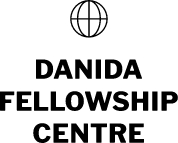Considerations to navigate North-South university partnerships. A story of change from Gulu University
25-01-24
RESUME: A young researcher describes her first-ever experience of negotiations between her home university in Uganda and potential partner universities in Denmark under the Building Stronger Universities (BSU) programme. She was struck by how heated the discussions became amongst the northern partners as they positioned themselves while the Gulu team looked on. Something had to be done to break the deadlock and the young woman stepped in. Agatha Alidri tells the story about how the experience awakened her awareness of the power dynamics that are at play at any negotiating table and in north-south partnerships in particular, and how it is important to consistently keep one’s eyes on the end goals of the research programmes or university partnerships.
By Agatha Alidri (PhD) Lecturer, Gulu University
It was a bright and sparkly sunny day in February 2013 when the Gulu University team came to the table at the Golden Courts Hotel in Gulu to negotiate Phase 2 of the Building Stronger Universities (BSU) programme with our potential northern partners.
The warm and friendly atmosphere both inside and outside the hotel gave us hope for our big dreams. However, despite my excitement, I had absolutely no negotiating experience. I also felt that none of us had any idea of what we would finally take home from the meeting. Let me use the analogy of hunting in an African setting: we were like a young man on his first hunt who was not sure of what animal he would finally bring home.
The first phase of the BSU programme was formulated in Nairobi, a thousand miles away from home, with only a couple of representatives from Gulu University. Now here we were, in Gulu, in a spacious, cool hotel conference room, sitting at a table on chairs adorned with maroon and golden striped covers, to negotiate with our partners from the north.
The atmosphere in the room was relaxed and the team spent some time exchanging pleasantries and handshakes. In Uganda we call it “catching up,” bringing to memory past BSU programme meetings in Denmark and in Nairobi. This was the first step in the birth of the BSU2 programme.
Not long into the meeting, we started to feel the dominance of some of the northern institutions through their representatives. The meeting, so relaxed and friendly at the start, became heated and we saw clouds of emotion rise as the various parties pushed for their special interests within the thematic areas. This set the ground for the ‘power play and relations’ that would continue to raise their heads in BSU programmes.
The purpose of that first meeting in Gulu was to develop the “Implementation and Activity Plan” for the BSU2 programme. The expressed intention was that each participant wanted key thematic areas, activities and budget in the project for their university. This triggered power dynamics amongst the Danish universities themselves in the initial stages and only later did the south-north power dynamics appear.
It became clear that, although the BSU programme focused on institutional capacity building in research in the south, members of the north consortium had their own interests that were related to promoting their institutional visibility back home in Denmark.
On the third day of the meeting, amidst the heated intellectual discussions and debates, the northern partners became more divided than when they had arrived. With a stalemate in the north consortium, the Gulu team was left puzzled. As a neutral person, I felt the urge to intervene to have everyone refocus on the planned outcome of the meeting. I had gotten onto the Gulu team by virtue of my active participation in BSU1 graduate training workshops and a donor requirement that at least 30% of the participants in every BSU activity should be women.
I re-echoed the importance of the negotiations. We had to reach an agreement, rather than let the negotiations fall apart. This made sense to both the northern and southern partners. We summoned our energy once more and subdued our emotions in the interest of the bigger agenda that was to establish the BSU2 programme. After all, unlike BSU1, BSU2 and subsequent BSU programmes were to be south driven. While the negotiations generally succeeded, it was at this point that some partners dropped out.
The BSU2 programme document was finally drafted, submitted to DFC and approved and the implementation of BSU2 kick started in September 2013. I was now more involved than before and began to reflect on how the unequal power play in BSU1 had affected the implementation of the programme. Later, when I was appointed Deputy Project Coordinator, I became cognizant of how power plays in subsequent BSU collaborative programmes could, if not well handled, either destroy or derail a well-intentioned collaborative programme.
I realised that the Gulu University programme team had to develop their negotiation skills. The first thing to do was to identify the key areas where power interplay is critical. These include 1) the project structure, 2) decision making, 3) budget control, 4) the thematic areas, 5) the generation and sharing of knowledge, 6) publication, 7) exploring new networks and 8) be aware of the north-south dynamics.
As we journeyed from BSU2, through BSU3 and into BSU4, we learned lessons from the inter- and intra-power dynamics and conflicting interests. The key lesson learned for us has been that for the BSU programmes to succeed they should be south-led. Positive power relations improve working relations and lead to the optimum outcome of a project as deliverables.
We intend to minimise unequal power relations between south-north and north-north partnerships by democratising the programme and its activities. Our focus is now the uniqueness of each partner and how this can be used to bolster collaboration as well as Gulu University’s institutional research capacity.
Edited by Kate Girvan
Go back to our stories